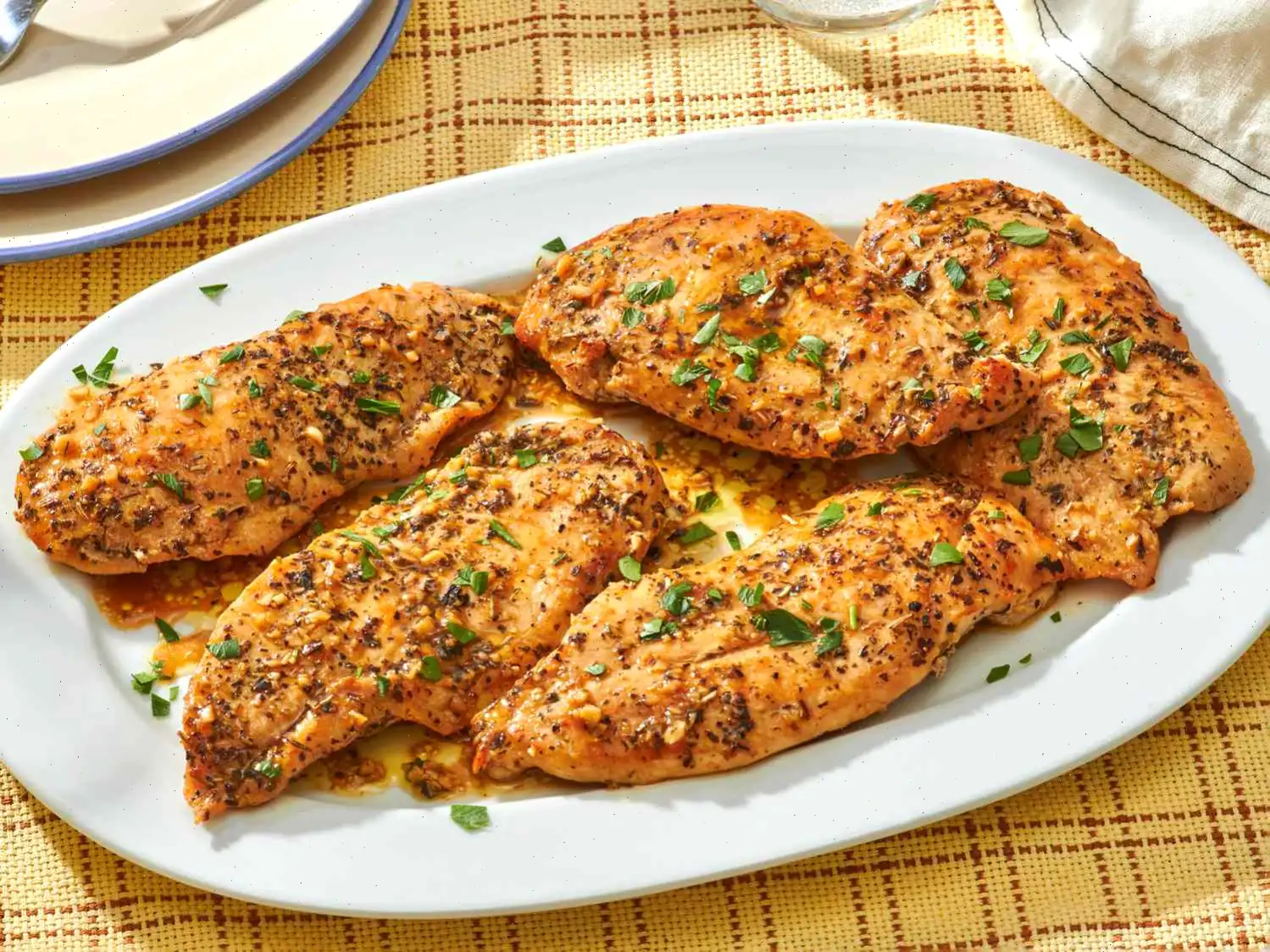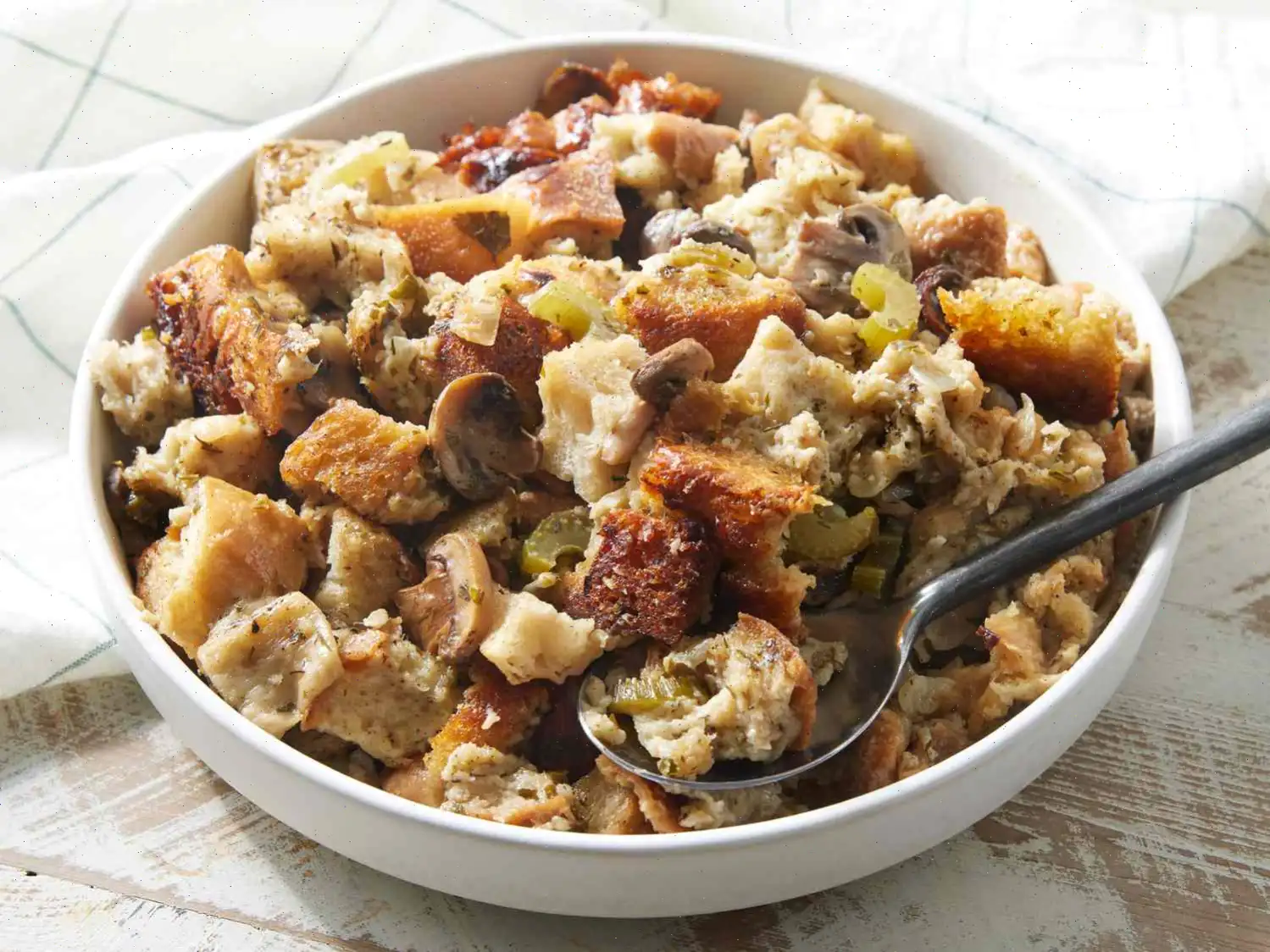
Pierogies Recipe
Ingredients
This recipe was developed at its original yield. Ingredient amounts are automatically adjusted, but cooking times and steps remain unchanged. Note that not all recipes scale perfectly. Original recipe (1X) yields 16 servings.
- 1 (16 ounce) sour cream
- 3 cups all-purpose flour
- 2 cups cold mashed potatoes
- cup butter
- 2 large onions, chopped
Directions
- Place the sour cream in a large bowl and mix in the flour until a dough forms.
- Roll out the dough on a floured surface to about 1/16 inch thick. Use a cookie cutter or a glass to cut out rounds about 3 1/2 inches across.
- Re-roll any unused dough up to 4 times to make more rounds. After that, the dough becomes difficult to work with.
- Place about 1 teaspoon of mashed potatoes in the center of each dough round.
- Fold the dough over into a half-moon shape and press the edges together with a fork to seal the pierogies.
- Set the filled pierogies aside and cover them with a towel to prevent them from drying out.
- Melt the butter in a large skillet over medium-low heat. Add the chopped onions and cook, stirring occasionally, until they are translucent (about 4-5 minutes).
- Remove the cooked onions from the skillet and set them aside, leaving the butter in the skillet.
- Bring a large saucepan of water to a boil. Carefully drop a few pierogies at a time into the boiling water.
- Once the pierogies float to the surface, allow them to gently boil for about 4 minutes.
- Re-heat the butter in the skillet over medium heat. Using a slotted spoon, carefully scoop the pierogies out of the water and place them in the skillet to brown on the bottom (about 3 minutes per side).
- Transfer the fried pierogies to a buttered baking sheet and sprinkle with the cooked onions.
- Keep the pierogies warm in the oven at a low setting until ready to serve.
Tips
- You can prepare the pierogies ahead of time and freeze them after boiling in Step 4. When you're ready to serve, simply fry them as directed.
Nutrition Facts (per serving)
| Calories | 226 |
|---|---|
| Total Fat | 12g |
| Saturated Fat | 8g |
| Cholesterol | 28mg |
| Sodium | 136mg |
| Total Carbohydrate | 26g |
| Dietary Fiber | 1g |
| Total Sugars | 1g |
| Protein | 4g |
| Vitamin C | 3mg |
| Calcium | 49mg |
| Iron | 1mg |
| Potassium | 173mg |
Servings per Recipe: 16
Percent Daily Values are based on a 2,000 calorie diet. Your daily values may be higher or lower depending on your calorie needs.
Pierogies are a beloved dish that has been a staple in Eastern European cuisine for centuries. These dumplings, typically filled with mashed potatoes, cheese, and sometimes other ingredients like meat or sauerkraut, are enjoyed in many countries with varying regional twists. Though their precise origin remains debated, pierogies are most strongly associated with Poland, Ukraine, and Russia, where they have evolved over time to suit local tastes and customs.
History and Origins
The exact origin of pierogies is unclear, but many trace the dish back to Poland in the 13th century, where they were first mentioned in historical records. They were likely influenced by the dumplings brought to Eastern Europe by immigrants from Asia. Some historians also believe pierogies have roots in ancient Slavic traditions, as the word "pierogi" itself is derived from the Slavic word "pierog," meaning "festive food." Over time, pierogies spread across Eastern Europe and were adopted by many cultures, becoming an integral part of the culinary heritage in Poland, Ukraine, and beyond.
Regional Variations
While pierogies are universally adored, each country has its own regional variations. In Poland, pierogies are often filled with mashed potatoes, cheese, or meat and are traditionally boiled before being fried in butter. Ukrainian pierogies, known as "varenyky," may include a variety of fillings such as mushrooms, cabbage, and cherries. In Russia, pierogies can sometimes be filled with buckwheat or meat, reflecting regional agricultural practices. The dough itself can also vary slightly, with some recipes including eggs or sour cream, as seen in the recipe above, which yields a tender, flavorful dough that complements the rich fillings.
How Pierogies Differ from Similar Dishes
Although pierogies share similarities with dumplings found in other cultures, they stand apart due to their distinctive filling options and preparation methods. Unlike Chinese dumplings or Italian ravioli, which are often steamed or boiled alone, pierogies are typically fried after boiling, giving them a crispy texture that enhances the flavor. The use of mashed potatoes as a primary filling also sets pierogies apart from other dumplings, which often feature ground meats or vegetables as the main stuffing.
Where Pierogies Are Served
Pierogies are commonly served as a main dish or side dish in Eastern Europe, particularly during family gatherings, holidays, and celebrations. In Poland, pierogies are often featured at Christmas Eve dinners, where they may be filled with sauerkraut or mushrooms. In the United States, particularly in areas with large Eastern European immigrant populations, pierogies can be found in many Polish and Ukrainian restaurants, often served with sour cream or caramelized onions. They are also a popular comfort food, frequently served at family dinners and community festivals.
Interesting Facts About Pierogies
- The most popular pierogi filling is mashed potatoes and cheese, although variations can include meat, mushrooms, or fruit.
- Pierogies are traditionally made by hand, with dough rolled out and cut into circles before being stuffed and sealed. In some regions, however, machines are now used to speed up the process.
- In Poland, there is a national pierogi festival held annually in the town of Krakw, where enthusiasts gather to celebrate the beloved dish and try hundreds of variations.
- In addition to their savory versions, pierogies can also be made with sweet fillings, such as cherries or sweet cheese, and are often served as a dessert.
- Pierogies were once considered a "peasant food," making use of simple, inexpensive ingredients like potatoes, flour, and cheese. Today, they are enjoyed by people of all social classes and have gained international popularity.
You can listen to this recipe in AI audio format. Simply click the play button below to listen to the content in a format that suits you best. It’s a great way to absorb information on the go!
FAQ about Pierogies Recipe
Comments
Jerry Perez
01/23/2023 07:23:24 AM
I absolutely loved making these pierogi! As a person of Polish and Ukrainian descent, I had some hesitations about trying out the recipe, especially with the sour cream ingredient. However, I was blown away by how pliable the dough turned out to be! I rolled the dough into ropes, cut them into smaller pieces, and shaped them into circles with a rolling pin. For the fillings, I went with two variations. First, I boiled potatoes until tender, then mixed them with farmers cheese, sautéed onions, and a generous amount of butter. The second filling, a personal favorite of my dad's, consisted of farmers cheese, buttery sautéed onions, and fresh dill – simply delicious! I seasoned both mixtures with salt and pepper before boiling them and then crisping them up in a buttery onion mix until they turned golden. Serving these pierogi with a dollop of sour cream was the perfect finishing touch. Absolutely delightful – can't wait to make them again!
Rachel Thomas
05/19/2024 09:23:13 AM
I had never tried pierogi until I got married, and even then I only bought the frozen ones from the grocery store. The other night, while searching for a side dish to pair with my slow cooker country ribs, I stumbled upon this recipe. These homemade pierogi were incredibly easy to make and turned out delicious! I filled them with mashed potatoes and cheddar cheese this time, but I'm excited to experiment with other fillings like chorizo, Mexican cheese, and cilantro in the future. The dough was easy to handle, although I plan to add a dash of onion powder and/or salt next time for a bit more flavor as it was slightly bland. I didn't roll out the first batch thin enough, leading to a longer cooking time and a slightly doughy texture inside, so I recommend rolling the dough as thin as possible. Using a large biscuit cutter yielded the perfect size pierogi for us. Apologies to Mrs. T, but I won't be purchasing your frozen pierogi anymore - these homemade ones were just too easy and too delicious!
Christopher Walker
05/16/2025 06:49:42 PM
I was delighted with how simple it was to follow this recipe. I didn't bother measuring the dough as instructed since I'm not great at precise measurements – I prefer to go by instinct. Nonetheless, the results were fantastic. Next time, I'll aim to roll them out thinner.
Katherine Johnson
08/05/2022 09:34:52 PM
The end result was quite satisfactory. It requires some practice to master the technique of making these perfectly. I faced some challenges trying to incorporate more potatoes into the dough. Rolling the dough thinner might solve this issue. The taste was good overall, but it's definitely a recipe that requires some effort to perfect!








